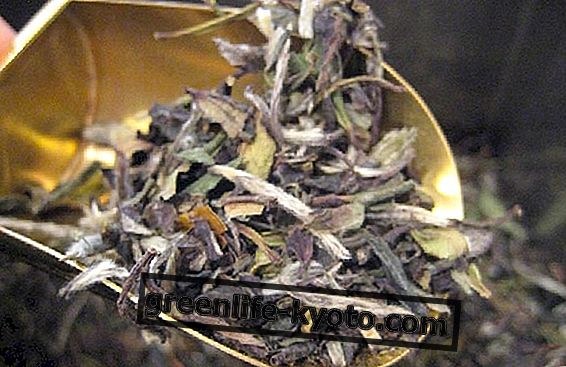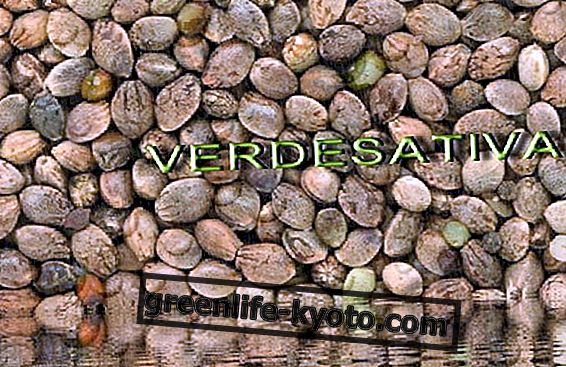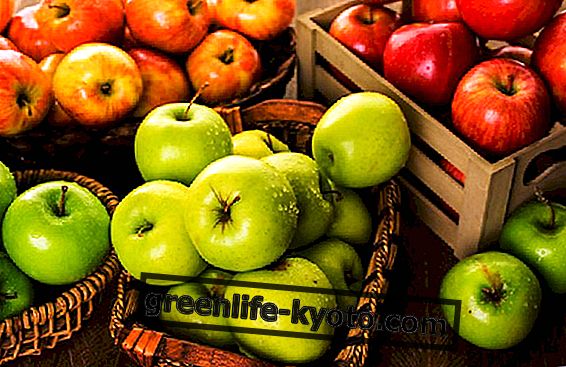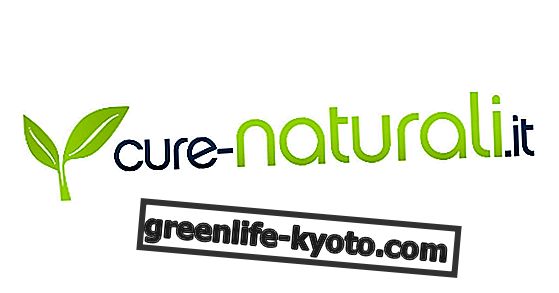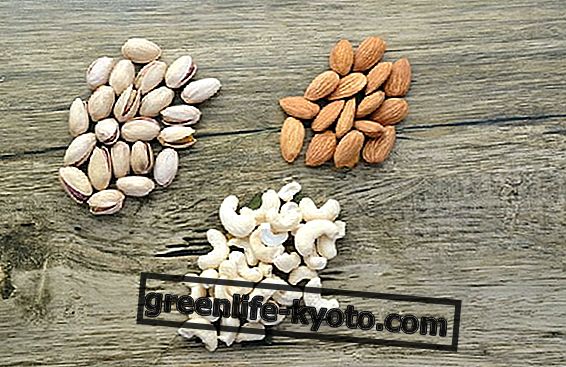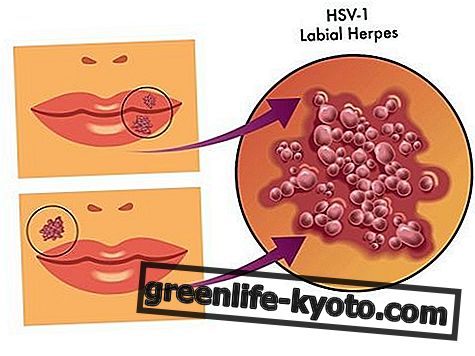
The Kousmine method owes its name to the name of the Swiss researcher of Russian origin, Catherine Kousmine (who died in 1992). According to Dr. Kousmine, the disease is not an independent lifestyle event and depends on the patient's eating habits.
The kousmine method concerns every person who wants to keep his health intact.
Why the disease?
Diseases are always multifactorial: there are many causes that cause them and why they are unleashed, they need different causes that combine but in general the common cause is the weakness of the immune system.
The kousmine method eliminates / reduces:
- Acidosis of the body
- Intestinal toxins and poisons
- Inflammation (with polyunsaturated oils)
The absolute principles of the Kousmine method
Every day take: 1 tablespoon of cold-pressed sunflower oil (= linoleic acid = AGE)
- every day take: 4-5 walnuts or 6-7 almonds or 10 hazelnuts (not toasted) (this way we supply vitamin F, or essential polisanturi fatty acids; deficiency symptoms: generalized fatigue, chronic evolutionary polyarthritis, multiple sclerosis, lupus erythematosus, other autoimmune diseases, dry skin, eczema, bronchial asthma, hay fever ...
- eliminate butter and margarine, use only cold-pressed vegetable oils.
- Every day take: 1 tablespoon of whole organic cereals finely ground at the time, such as: barley, oats, rice, buckwheat; can be added to yogurt, soups, smoothies etc ...
- Remove white sugar; use honey or cereal malt and consequently eliminate sweets, ice cream, chocolate, industrial sweets.
- Avoid alcohol and smoking
- Avoid pre-cooked canned and industrial products (contain additives)
- Reduce coffee and tea; use organic barley coffee and green tea
- Consume small quantities of milk and very little dairy products, low in fat, such as lean ricotta (8% fat). (Lactose intolerance is very common, probably 3 out of 4).
- Every day take: dietary fiber (whole grains, vegetables, fruit, bran)
- Use organic products, in order to reduce the load of additives, pesticides, preservatives.
- Avoid overcooked foods; preferred cooking: steamed, baked in foil. Prefer raw foods.
- Reduce the consumption of meat and still prefer meat from: turkey, chicken, rabbit, lamb (2- 3 times a week; prefer fish consumption
- Use the kombu, iziki and wakame algae in your daily diet.
- Intestinal hygiene: increase the fibers (oat bran, rice bran, or rye ) at least ½ cup a day, mixed with food. Drink very far from the main meals. Also: a spoonful of flax or psyllium seeds soaked in a glass of cold water in the evening. The next morning you drink all the contents of the glass (water + seeds) on an empty stomach. After taking the seeds, drink another glass of water. Enteroclisms at least twice a week (made with 1 ½ liter of chamomile for an adult) - 1 teaspoon of alkaline citrates (alkalizing salts) in the evening in a glass of water before going to bed (Basenpulver or Alkalin tablets)
BREAKFAST: Budwig cream (dose for one person) Whisk in the sequence: - 1 Tablespoon of whole organic raw cereals such as: rice or buckwheat or oats or millet or barley world or quinoa or amaranth. - 1 tablespoon of organic raw oil seeds such as: sunflower seeds or sesame or walnuts or hazelnuts or almonds or pumpkin seeds or cashew nuts etc etc ... - 1 teaspoon of cold-pressed organic linseed oil or 1 tablespoon of seeds of linen. - 2 tablespoons of ricotta or tofu or 1 jar of low-fat yogurt or egg yolk - 1 small ripe banana or 2 teaspoons of honey - juice of half a lemon or juice of an orange or fresh seasonal fruit (about 100 g) Breakfast it must be preceded by a large glass of water at room temperature.
LUNCH: - Start the meal with raw vegetables seasoned only with oil.- Organic whole grains cooked in soup or boiled (amaranth, oat spelled, wheat, buckwheat, corn, millet, barley, quinoa ) - Vegetable mostly cooked with steam (not pressure) - Alternate throughout the week: legumes (lentils, chickpeas, beans, peas, yellow soy, broad beans, azuki) or fish or eggs or white meat or lean ricotta Condiments allowed: organic extra virgin olive oil or sunflower oil cold pressed, lemon, soy sauce, garlic, thyme, onion, garlic, chilli). Oils must be stored in a dark and cool place with minimal contact with air. Allowed drinks: natural water, herbal tea, green tea.
DINNER: - Start the meal with raw vegetables seasoned only with oil.- Organic whole grains cooked in soup or boiled (amaranth, oat spelled, wheat, buckwheat, corn, millet, barley, quinoa) - Vegetable mostly cooked with steam (not pressure) Condiments allowed: extra virgin olive oil or cold-pressed organic sunflower oil, lemon, soy sauce, garlic, thyme, onion, garlic, chilli). The oils must be stored in a dark and cool place with minimal contact with air. Allowed drinks: natural water, herbal tea, green tea. Dinner should be consumed at least three hours before going to bed.
SNACKS IN HALF MORNING AND MIDNESS AFTERNOON: Fresh fruit or fruit juice or a centrifuged fruit or vegetable.
Foods
Milk / dairy products: milk contains many allergens; risks of milk: - presence of saturated fats - presence of butyric acid (dilator of the interstices of the walls of the intestine) - presence of lactose, milk sugar, difficult to digest and assimilation - milk proteins, one of the most serious risk factors of diabetes I, infantile Only the consumption of lean ricotta and low-fat yogurt is acceptable (lactose is here transformed by fermentation). No mozzarella: contains 20% fat: 1 mozzarella from 125 gr = extended fat content of 5 150 gr calf steaks!
Meat: No to excess meat in the diet (no more than three times a week); favor white meats like chicken, turkey, rabbit ... compared to beef and pork. The disposal of meat proteins acidifies the body. Never consume meat in the evening, as it makes the night detoxification work difficult. Fish is the best source of animal protein; contains EPA (polyunsaturated oil) and is rich in particular: herring, cod, salmon, sardines, anchovies ...)
Legumes: The richest vegetable source of proteins and fibers. Legumes must be associated with cereals such as rice, barley, spelled, millet, bread, pasta, buckwheat to have the complete balance of all the amino acids. The only "complete" legume is soy. Legumes have two problems: - presence of non-digestible oligosaccharides = intestinal gas - presence of toxic heterosides that form hydrocyanic acid, poisonous. They must be steam cooked better if they are pressed in abundant unsalted water, after soaking in warm water for at least 12 hours. Use a small piece of kombu seaweed. Lentils: rich in iron Yellow soy: the legume richest in essential amino acids and lecithin, rich in calcium, iron, potassium, phosphorus, magnesium. Effective in reducing LDL cholesterol and increasing HDL. estrogen-like function in menopausal women. Tofu: soya milk curd, rich in protein and low in fat. Tamari and shoyu: derived from fermented soybeans. Miso: fermented based on soy and cereals. Tempeh: compound of yellow soy and fermented with the fungus Rhizopus oligosporus. It has about 20% protein.
Carbohydrates: Source of energy because in their metabolism they are rapidly transformed into intermediate compounds and are completely burned to water and carbon dioxide without leaving waste as do the lipids that produce keto acids and the proteins that produce urea (toxic to the body). Always take cereals in SEEDS and INTEGRAL and BIOLOGICAL (rich in proteins, minerals and vitamins). Bread: use the bread produced with sourdough leavening: the acidic environment develops an enzyme, the phytase that neutralizes the action of phytin, in cereals suitable for bread making. Amaranth: rich in protein Oats: lowers cholesterol, rich in fiber Spelled / Kamut: low in gluten compared to wheat Wheat: rich in proteins and B vitamins, avoid wheat bran as a laxative (better than oats or rice) because it contains phytates that limit the absorption of minerals. Rich in gluten. Buckwheat: unique cereal rich in vitamin PP; it is not a cereal, it is a polygonacea (it has no gluten); he is a galactologist (whipped milk); heating cereal (Yang) Maize: contains vit. E and essential fatty acids. Millet: Very rich in iron, phosphorus, vit. A, B1 and PP. suitable for pregnancy, lactation and for children. Barley: food for students: rich in iron calcium and phosphorus. Potato: rich in potassium. contains solanine, a poisonous alkaloid. Raw in chopped pulp or juice is effective remedy for ulcers. Very alkalizing ideal for acidosis. Quinoa: rich in calcium, iron and vitamins. Contains lysine. Rice: it is the most low-protein cereal. It has a lot of vitamin PP. Red rice is rich in iron.
Roots and tubers: Jerusalem artichoke, tuber. It has no starch but is rich in inulin, a polysaccharide that breaks down slowly in our intestines into simple sugars. - Scorzonera and scorzobianca, rich in inulin, have no starch.
Sugar: The Kousmine method involves the elimination of refined white sugar because it contributes to the increase of plasma cholesterol, triglycerides, and uric acid in the blood; promotes platelet aggregation, intestinal fermentations, caries and causes decreased glucose tolerance (in children this gives rise to behavioral disorders as hypoglycemia gives rise to hyperactivity as the adrenal glands release adrenaline and other stimulants in response to low blood glucose). Use honey, molasses, maple syrup, agave syrup, cereal malt. Lipids or fats Essential fatty acids (AGE) are not produced by our body but must be introduced from the diet. They are: linoleic acid, alpha-linolenic and arachidonic. The oils of industrial manufacture are produced at high temperature with the transformation of the molecules of polyunsaturated fatty acids from cis-cis to cis trans ie from a form usable for our body to a form not only unusable but harmful. The excess of animal products gives a disproportionate contribution of saturated fatty acids compared to polyunsaturated fats. Coconut or palm oil is used in the industry as they are hydrogenated. Oils to be used: · extra virgin olive oil (monounsaturated fats), cold pressed, 2-3 tablespoons a day · a tablespoon of sunflower seeds or cold-pressed sunflower oil (linoleic acid) · 1 tbsp of cold-pressed linseed oil or 1 tablespoon of freshly ground flaxseed (alpha-linolenic acid) · fish such as herring, sardines, anchovies, mackerel (two days a week), alpha-linolenic acid of animal origin, the oils are easily degraded by light, air, at high temperatures (use raw). They must be stored in a dark and cool place with minimal air contact. Gamma-linolenic acid supplements in pearls: borage, enothera, blackcurrant (two 500 mg capsules in the morning before breakfast and two capsules before dinner)
Fruit: An excess of noble sugars such as those of fruit, can damage the delicate intestinal balance, create colitis derived from excessive intestinal fermentation. Fruit should never be consumed after meals; or before or as a snack.
Sprouts : Vegetable sprouts are rich in vitamins, minerals, enzymes. They are much more digestible than the seeds they come from but they are also very active. You can get them from: lentils, green soy, azuki, alfalfa that is alpha alpha, from cereals, from mustard, canola, cabbage, watercress seeds ... Instructions: soak the seeds for a time varying from 3 to 8 rinsing hours place the seeds on the sprout's shelves without overlapping them, hold the sprout in the dark for at least 3 days, rinse the seeds from 1 to 3 times a day "collect" the shoots produced when they are 1 or 2 cm long. Rinse them thoroughly before consuming the sprouts
Algae: rich in proteins, mineral salts (including calcium and iron), vitamins and trace elements.



